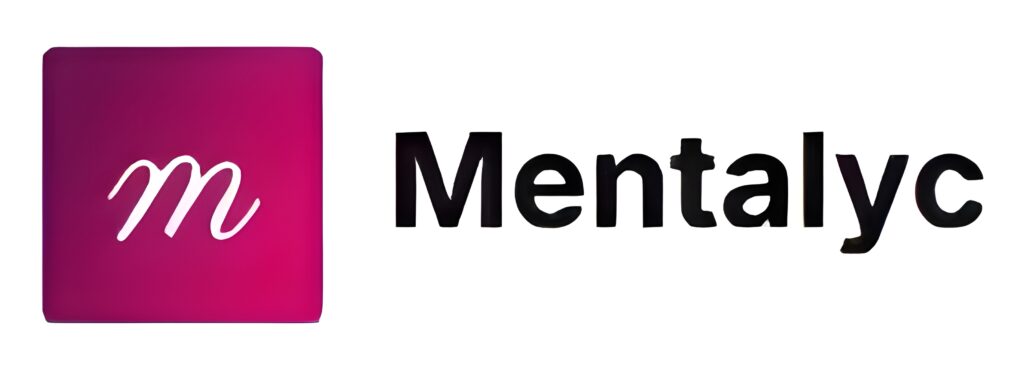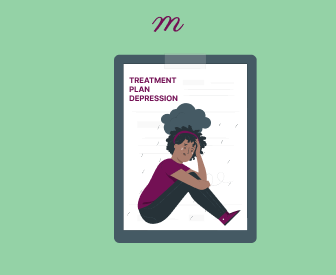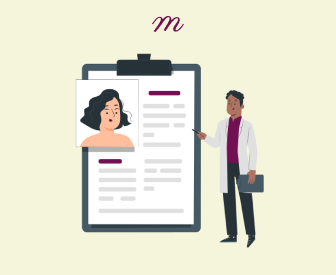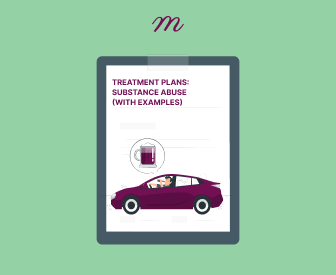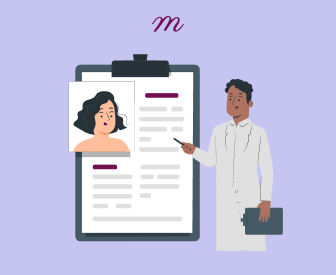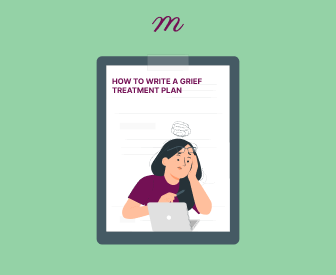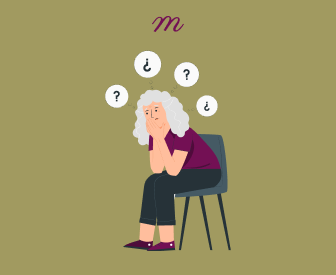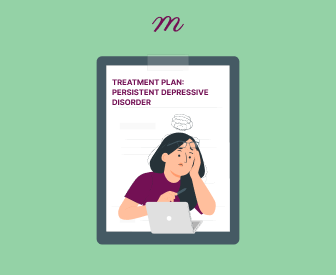Have your progress notes written for you automatically
Depression is a complex mental health illness that affects people’s emotional, cognitive, and physical well-being. Depression, which is characterized by persistent sadness, loss of interest, and a variety of other symptoms, can have a major impact on everyday functioning and well-being. This page presents an overview of depression, including its classification in the most recent DSM-5, typical treatment modalities, and a thorough treatment plan that combines two prominent therapeutic techniques. We’ll wrap up with significant insights and recommendations for mental health providers.
This guide aims to refine your existing knowledge and provide fresh insights into creating comprehensive, evidence-based treatment plans for your clients struggling with depression.
We’ll cover the following key areas:
- Understanding Depression: Clinical Presentation and Differential Diagnosis
- DSM-5 Classification and Diagnostic Criteria
- Components of a Comprehensive Treatment Plan
- Evidence-Based Treatment Modalities
- Pharmacological Interventions
- Holistic Care
- Case Studies and Sample Treatment Plans
Let’s dive into each section to deepen our understanding and improve our clinical practice.
Understanding Depression: Clinical Presentation and Differential Diagnosis
As mental health professionals, it’s crucial to distinguish between clinical depression and transient feelings of sadness. Here’s a quick refresher:
Clinical Depression:
- Persistent symptoms lasting at least two weeks
- Significant impairment in daily functioning
- May not have a clear external trigger
- Often involves feelings of worthlessness or excessive guilt
Regular Sadness:
- Usually triggered by a specific event
- Typically resolves with time
- Limited impact on daily functioning
- Self-esteem generally remains intact
Differential Diagnosis:
Remember to consider other conditions that may present with similar symptoms, such as:
- Bipolar disorder
- Anxiety disorders
- Substance-induced mood disorders
- Medical conditions (e.g., thyroid disorders, chronic pain)
DSM-5 Classification and Diagnostic Criteria
The DSM-5 classifies depressive disorders into several categories. For this guide, we’ll focus on Major Depressive Disorder (MDD) and Persistent Depressive Disorder (Dysthymia).
Major Depressive Disorder Criteria:
Five or more of the following symptoms present for at least two weeks, with at least one symptom being depressed mood or loss of interest/pleasure:
- Depressed mood most of the day, nearly every day
- Markedly diminished interest or pleasure in activities
- Significant weight loss/gain or appetite changes
- Insomnia or hypersomnia
- Psychomotor agitation or retardation
- Fatigue or loss of energy
- Feelings of worthlessness or excessive guilt
- Diminished ability to think or concentrate
- Recurrent thoughts of death or suicidal ideation
Persistent Depressive Disorder Criteria:
Depressed mood for most of the day, for more days than not, for at least two years. Presence of two or more of the following:
- Poor appetite or overeating
- Insomnia or hypersomnia
- Low energy or fatigue
- Low self-esteem
- Poor concentration or difficulty making decisions
- Feelings of hopelessness
Components of a Comprehensive Treatment Plan
A well-structured treatment plan should include:
a) Problem Statement: Concise description of the presenting issue
b) Goals: SMART (Specific, Measurable, Achievable, Relevant, Time-bound) treatment goals
c) Objectives: Concrete steps to achieve each goal d) Interventions: Specific therapeutic techniques and strategies
e) Evaluation Criteria: Methods to assess progress f) Timeline: Estimated duration and frequency of treatment g) Collaboration: Involvement of other healthcare providers or support systems
Evidence-Based Treatment Modalities
Consider incorporating these proven approaches:
- Cognitive Behavioral Therapy (CBT)
- Interpersonal Therapy (IPT)
- Behavioral Activation
- Mindfulness-Based Cognitive Therapy (MBCT)
- Acceptance and Commitment Therapy (ACT)
- Psychodynamic Therapy
Pharmacological Interventions
Common classes of antidepressants include:
- Selective Serotonin Reuptake Inhibitors (SSRIs)
- Serotonin-Norepinephrine Reuptake Inhibitors (SNRIs)
- Atypical Antidepressants
- Tricyclic Antidepressants (TCAs)
- Monoamine Oxidase Inhibitors (MAOIs)
Remember to consider potential side effects, interactions, and the need for careful monitoring when prescribing.
Case Studies and Example Treatment Plans
Case Study 1: Sarah, 32-year-old female
Presenting Problem:
Sarah reports feeling persistently sad and unmotivated for the past three months. She has lost interest in her usual hobbies, struggles to concentrate at work, and often feels worthless. She has been experiencing insomnia and has lost 10 pounds without trying.
Diagnosis:
Major Depressive Disorder, Single Episode, Moderate (F32.1)
Treatment Plan:
Goal 1: Reduce depressive symptoms as measured by a decrease in PHQ-9 score from 15 to 5 or less within 12 weeks.
Objectives:
- Engage in CBT sessions weekly for 12 weeks
- Practice mindfulness meditation for 10 minutes daily
- Increase physical activity to 30 minutes of moderate exercise 3 times per week
Interventions:
- Provide psychoeducation about depression and its treatment
- Teach cognitive restructuring techniques to challenge negative thoughts
- Introduce behavioral activation strategies to increase engagement in pleasurable activities
- Implement sleep hygiene techniques to improve sleep patterns
Goal 2: Improve work functioning by increasing concentration and productivity within 8 weeks.
Objectives:
- Develop and implement time management and organizational strategies
- Practice mindfulness techniques to enhance focus
- Gradually increase work responsibilities as symptoms improve
Interventions:
- Teach prioritization and task-breaking techniques
- Introduce mindfulness exercises specifically for improving concentration
- Collaborate with employer on reasonable accommodations if needed
Evaluation:
- Weekly PHQ-9 assessments
- Daily mood and activity logs
- Bi-weekly review of work performance and concentration
Medication: Start sertraline 50mg daily, to be reviewed after 4 weeks
Case Study 2: Michael, 45-year-old male
Presenting Problem: Michael has been experiencing low mood, irritability, and fatigue for over a year. He reports feeling “stuck” in his life, has strained relationships with his family, and has been drinking alcohol more frequently to cope with his emotions.
Diagnosis: Persistent Depressive Disorder (Dysthymia) with anxious distress (F34.1)
Treatment Plan:
Goal 1: Reduce depressive symptoms and improve overall mood stability over 16 weeks.
Objectives:
- Attend weekly individual therapy sessions
- Reduce alcohol consumption to no more than 2 drinks per week
- Establish a regular sleep schedule, aiming for 7-8 hours per night
Interventions:
- Utilize Interpersonal Therapy (IPT) to address relationship issues and social support
- Implement CBT techniques to manage negative thought patterns
- Provide psychoeducation on the relationship between alcohol use and depression
- Introduce relaxation techniques and stress management strategies
Goal 2: Improve family relationships within 12 weeks.
Objectives:
- Attend bi-weekly family therapy sessions
- Practice effective communication skills daily
- Plan and engage in one positive family activity per week
Interventions:
- Facilitate family therapy sessions focusing on communication and conflict resolution
- Teach assertiveness skills and emotion regulation techniques
- Assign homework to practice new communication skills in daily interactions
Evaluation:
- Bi-weekly administration of Beck Depression Inventory (BDI)
- Weekly alcohol consumption log
- Family member feedback on relationship quality
Medication: Start bupropion XL 150mg daily for 2 weeks, then increase to 300mg daily if tolerated. Review after 6 weeks.
Case Study 3: Emily, 19-year-old female college student
Presenting Problem: Emily reports feeling overwhelmed with academic pressures, experiencing frequent crying spells, and having difficulty getting out of bed. She has been isolating herself from friends and has had thoughts of “not wanting to exist” but denies active suicidal ideation.
Diagnosis: Major Depressive Disorder, Single Episode, Severe without Psychotic Features (F32.2)
Treatment Plan:
Goal 1: Ensure safety and stabilize mood within 4 weeks. Objectives:
- Develop a safety plan and crisis management strategies
- Attend therapy sessions twice weekly for the first month
- Engage in daily mood tracking and journaling
Interventions:
- Conduct a thorough suicide risk assessment and create a detailed safety plan
- Implement crisis management techniques, including distress tolerance skills from Dialectical Behavior Therapy (DBT)
- Provide psychoeducation on depression and its impact on academic performance
- Teach and practice grounding techniques for managing overwhelming emotions
Goal 2: Improve academic functioning and social engagement within 8 weeks.
Objectives:
- Establish a structured daily routine, including regular study times
- Reconnect with at least two friends per week through in-person or virtual meetings
- Utilize campus academic support services weekly
Interventions:
- Use CBT techniques to address perfectionism and academic-related anxiety
- Implement behavioral activation strategies to increase social engagement
- Collaborate with academic advisor to develop a manageable course load and utilize accommodations if needed
- Teach time management and study skills
Goal 3: Develop long-term coping strategies and relapse prevention plan within 12 weeks. Objectives:
- Identify and practice at least three effective coping strategies
- Create a written relapse prevention plan
- Join a peer support group for young adults with depression
Interventions:
- Introduce mindfulness-based stress reduction techniques
- Develop a personalized wellness plan incorporating self-care activities
- Facilitate connection with campus support groups or online peer support communities
Evaluation:
- Weekly administration of PHQ-9 and Columbia-Suicide Severity Rating Scale (C-SSRS)
- Bi-weekly review of academic performance and attendance
- Monthly assessment of social engagement and support system
Medication: Start escitalopram 10mg daily, with close monitoring for the first 4 weeks due to age and severity of symptoms. Consider referral to psychiatrist for medication management.
These case studies and treatment plans demonstrate the individualized approach necessary in treating depression. Each plan addresses the specific needs, circumstances, and goals of the client while incorporating evidence-based interventions and regular evaluation of progress.
Remember that treatment plans should be flexible and may need adjustment as therapy progresses and the client’s needs or circumstances change. Regular collaboration between the therapist, client, and other healthcare providers is crucial for effective depression treatment.
Holistic Care:
Cultural Factors in Treatment Planning:
During the development of treatment plans, one should keep in mind that clients’ cultural backgrounds are very important in the way they experience depression, in help-seeking behaviors, and in how they react to treatments. Culturally adapted interventions may be required for effectiveness and engagement.
Trauma-Informed Care:
Many people who experience depression may have experienced trauma. Elements of trauma-informed care, if incorporated into basic treatment plans, will help maximize their efficiency and avoid re-traumatization.
Collaborative Care Model:
A collaborative care model is one in which mental health is brought into a primary care setting. This may improve access to care and increase treatment adherence, potentially improving outcomes in patients with depression.
Digital Health Interventions:
Consider the use of evidence-based digital tools allowing for mood tracking via mobile apps or offering online modules for CBT to supplement traditional therapy and increase engagement during intervening periods between sessions.
Lifestyle Interventions:
Include discussions regarding exercise, nutrition, and sleep hygiene within the treatment plan. These things have a huge impact on mood and overall well-being.
Peer Support:
Consider referring them to peer support groups or peer recovery specialists, which can provide social support and share coping skills that are very useful for patients experiencing depression.
Measurement-Based Care:
Routinely implement the use of standardized assessment tools in order to track progress, inform treatment decisions, outline when treatment plans must be changed, and demonstrate the effectiveness of interventions to clients and other stakeholders.
Relapse Prevention:
Once the clients start to recover, much of the work will focus on building a robust relapse prevention plan that outlines early warning signs, wellness strategies, and when and how to seek extra help if symptoms worsen.
These things, integrated within our treatment planning and clinical practice, can produce more holistic and effective care for people dealing with depression. Keep in mind that every client is unique, and treatment plans must take into account the needs, preferences, and specific circumstances of each client.
Conclusion
Depression is a very serious mental health condition which requires a comprehensive approach, both by medicines and psychotherapy. The formulation of effective treatment plans for depression requires extensive knowledge of the disorder, comprehensive assessment of the client as a unique individual, and skillful application of evidence-based interventions. By tailoring our approach to the individual needs and circumstances of each client, we are well positioned to make a real difference in the outcomes and assist our clients on their path to long-lasting recovery.
Key Points to Remember:
- Individualization: Modify the treatment plans for the unique needs and situations of each patient. Regular evaluation and modification of the treatment plan are very important for the good results.
- Patient Engagement: Patients must co-construct the treatment plan and be actively involved in it. Encourage cooperation and be sure that the goals and interventions they present have in mind their personal values and needs.
- Ongoing Support: In most cases, the treatment for depression lasts for a long time and the support is continuous. Regular check-ups and maintenance strategies are the fundamental components of a healthy life that are important for relapse prevention and continuous healing.
Disclaimer
All examples of mental health documentation are fictional and for informational purposes only.
